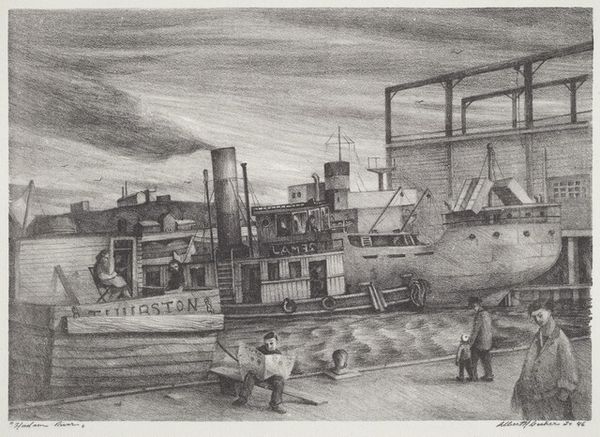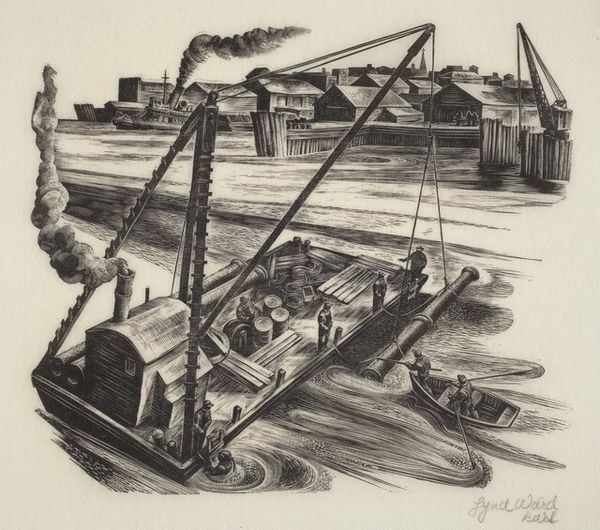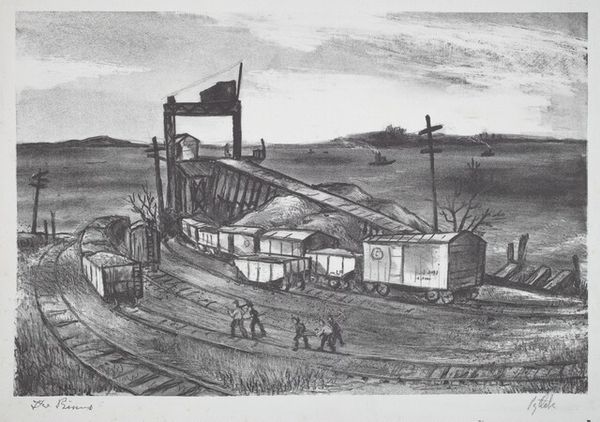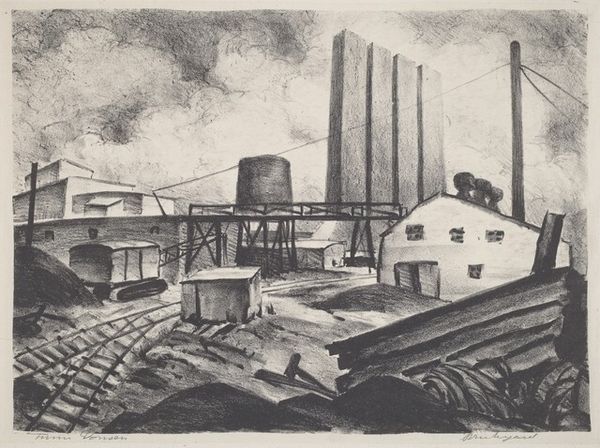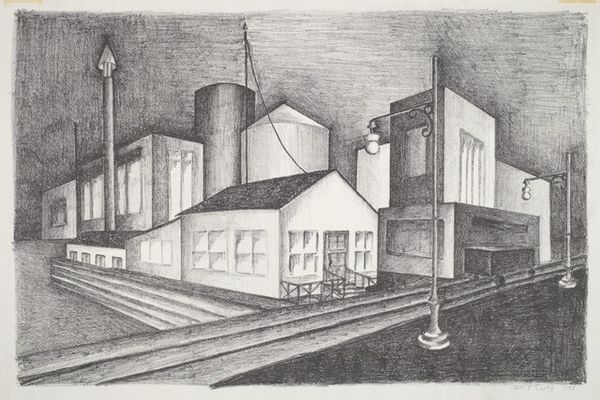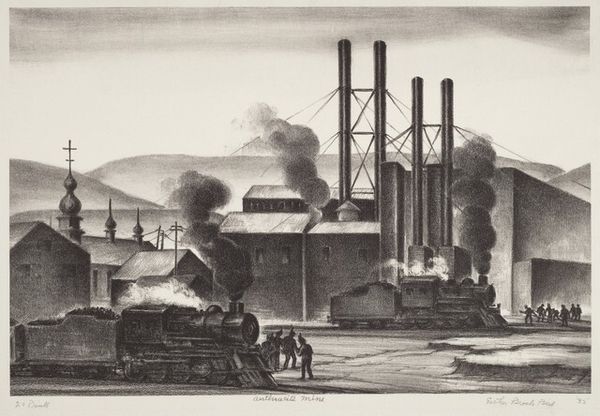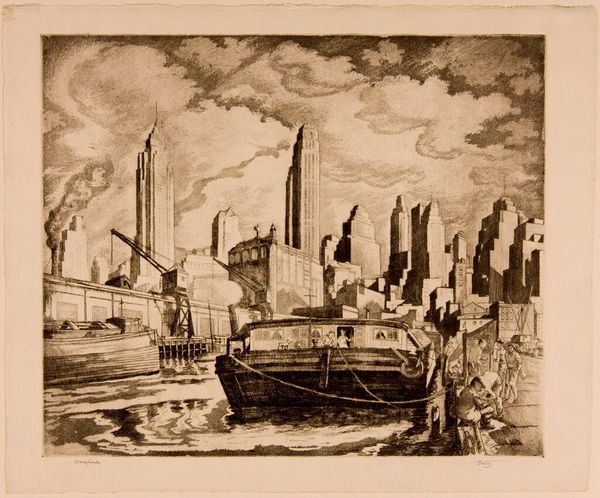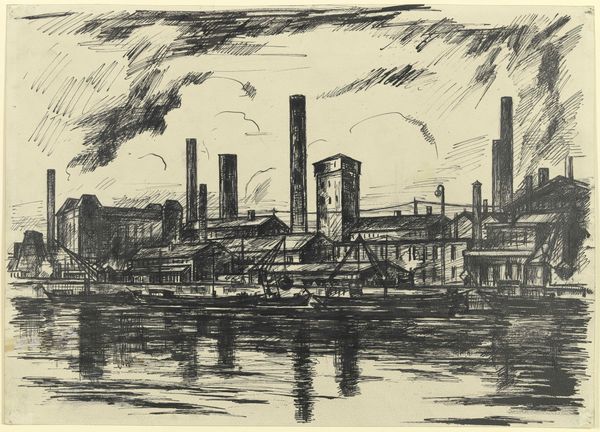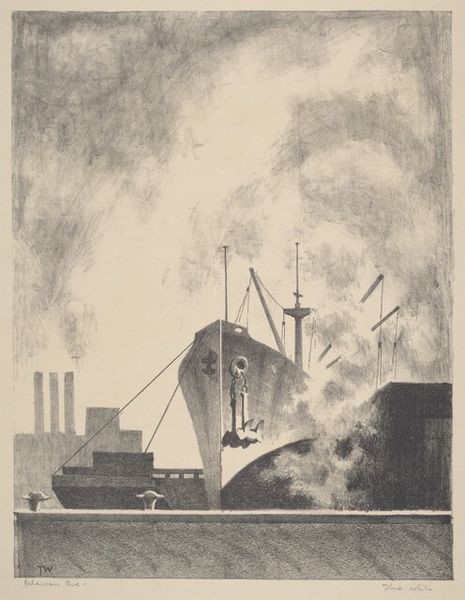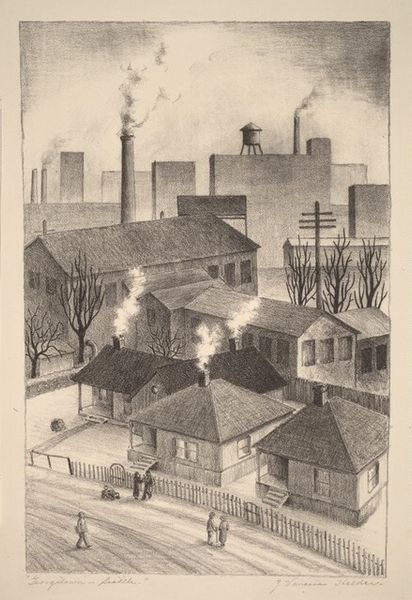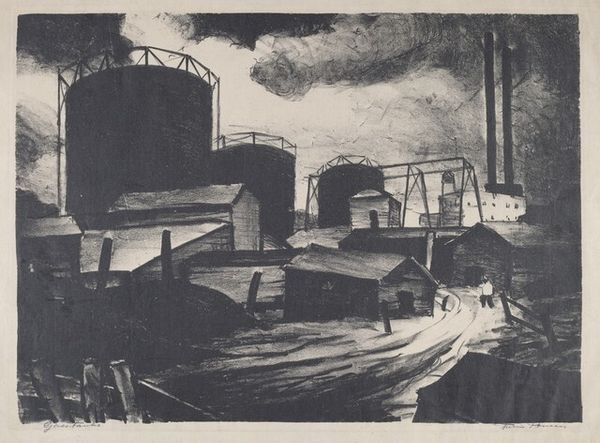
print, graphite
#
precisionism
#
pencil drawn
# print
#
landscape
#
graphite
#
cityscape
Dimensions: image: 11.5 × 19.7 cm (4 1/2 × 7 3/4 in.) sheet: 17.6 × 22.9 cm (6 15/16 × 9 in.)
Copyright: National Gallery of Art: CC0 1.0
Editor: Here we have Max Weber’s “Spuyten Duyvil,” a graphite print from 1928. The tones are really subtle, and there’s a strong emphasis on these angular, industrial forms… almost like the buildings themselves are breathing. What strikes you about this work? Curator: I’m drawn to the tension between the depicted industrial scene and the artistic *process* itself. Weber chose graphite, a relatively humble material, to portray this landscape dominated by industry. Graphite as a medium requires direct hand contact with the paper. The choice of printmaking further complicates this – making a reproducible image of something already mechanically produced. Editor: So, you’re focusing on the way Weber chose to depict this industrialized scene. Can you tell me more about that choice? Curator: Absolutely. Look at the texture of the print; the hand-drawn aspect contrasts so strongly with the clean lines usually associated with Precisionism. It reminds us that these structures were built by laborers, the work leaving traces in graphite and ink. The smoke itself almost becomes another raw material, doesn’t it? What’s produced in that place impacts the surrounding communities. The location represented is a point where industry, natural resources, and labour converge. Editor: I hadn't really considered the physical aspect of making the print, just the image itself! So by thinking about materiality and the process, we gain insight into labour and its footprint in that particular social context. Thanks. Curator: Exactly. Consider it a window into how even landscapes are constructed through tangible human effort and available technologies. The labor itself is permanently reflected in the finished product.
Comments
No comments
Be the first to comment and join the conversation on the ultimate creative platform.
